Why are SaaS teams still stuck with outdated lead generation tactics like cold emails and endless LinkedIn outreach when competitors are scaling smarter with automation? In 2025, the landscape has shifted. AI-driven tools have transformed prospecting into a precise and efficient process, enabling businesses to grow without the grind.
Experts in the field emphasize that the best platforms prioritize quality connections over sheer volume. From predictive analytics to hyper-personalized campaigns, top tools are redefining pipeline building.
This article explores the leading lead generation SaaS platforms, including HubSpot’s advanced ecosystem, Apollo’s data-driven approach, and rising stars like Clay. These solutions empower companies to gain a competitive edge and drive conversions with unmatched precision.
Choosing the right CRM (Customer Relationship Management) platform is foundational for SaaS companies wanting to streamline lead management, automate workflows, and accelerate conversions. Let’s explore how top contenders such as HubSpot, Salesforce, and Freshsales combine technology with strategic capabilities to meet diverse SaaS marketer needs.
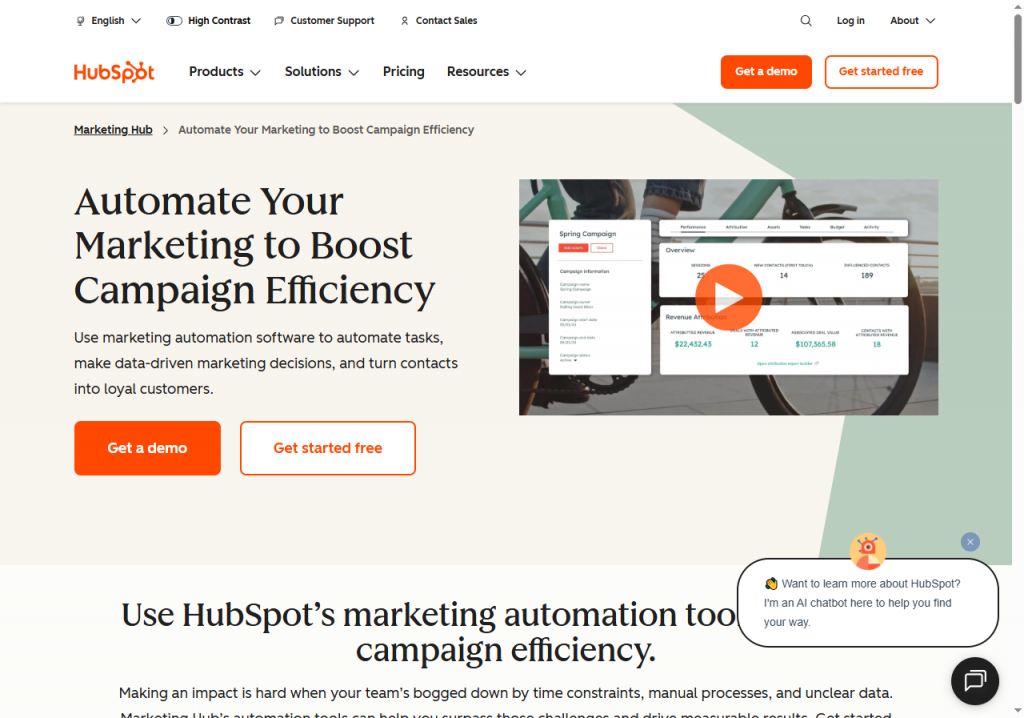
HubSpot stands out with its user-friendly interface and comprehensive integration of marketing, sales, and content tools. It offers powerful features such as lead capture through forms and chatbots, sales pipeline management, deal tracking, and customizable scoring. Its marketing automation allows segmented nurturing workflows, so prospects receive timely, relevant messages based on behavior.
HubSpot’s built-in analytics and reporting enable data-driven decisions. Ideal for startups to mid-sized businesses, HubSpot also excels at helping teams align marketing with sales efforts seamlessly.
Salesforce is the CRM heavyweight favored by large SaaS enterprises requiring deep customization. Its Sales Cloud platform supports highly configurable pipelines and workflows, multi-channel engagement, and advanced integration with ERP and customer support systems.
Salesforce Einstein, its AI module, provides predictive sales forecasting and lead scoring, offering insights that improve targeting and close rates. The platform’s scalability suits large sales teams handling complex buying groups and long sales cycles.
Freshsales by Freshworks targets smaller SaaS companies needing a simple yet effective CRM. It combines lead management with built-in phone and email communication, making it easy to track interactions in one place. Automation handles lead assignment, follow-ups, and notifications.
With AI-driven lead scoring, teams can focus on the hottest prospects. Freshsales provides mobile-friendly access and quick setup, balancing affordability with essential sales productivity features.
All three platforms support core capabilities critical for SaaS lead generation: capturing leads efficiently, managing sales pipelines effectively, scoring and prioritizing prospects intelligently, and nurturing relationships with automated workflows.
In a competitive SaaS market, having accurate, actionable data is critical for finding and engaging the right buyers. Sales intelligence tools provide deep insights and verified contact information, helping sales teams target high-potential prospects efficiently. Here are three leading platforms transforming SaaS prospecting in 2025.
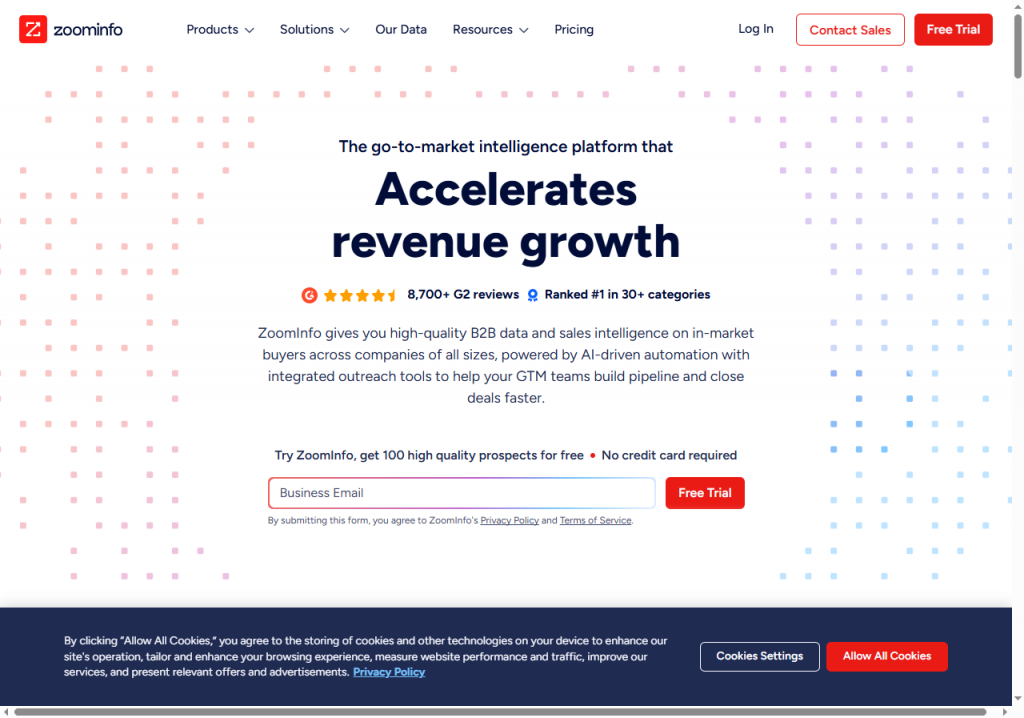
ZoomInfo boasts one of the largest B2B contact and company databases, featuring over 100 million profiles and 220 million professional contacts. What sets ZoomInfo apart is its advanced AI-driven intent data, which surfaces companies actively researching solutions similar to yours.
This lets sales teams prioritize outreach to accounts already in-market, reducing guesswork and accelerating pipeline development. ZoomInfo also offers seamless CRM integration and real-time alerts on buying signals, helping reps respond quickly to opportunities. Some users note the platform is pricey, but its data accuracy and depth justify the investment for many enterprises.
Apollo combines an extensive database with powerful engagement tools. Its ability to build targeted lists based on firmographic and technographic filters allows sales teams to find decision makers matching their ideal customer profiles swiftly.
Apollo’s email sequencing and automation capabilities enable personalized, multistage outreach, while analytics dashboards help track campaign performance and optimize messaging. With integrations into popular CRMs and affordable pricing, Apollo suits startups and mid-market SaaS firms seeking an all-in-one solution for lead generation and sales engagement.
Cognism stands out with its GDPR compliant global database and unique Diamond Data® technology that boosts connection rates via mobile numbers. It leverages AI to generate real time intent signals and sales triggers such as new hires or product launches, helping sales teams time their outreach perfectly.
Cognism’s platform includes easy CRM integrations and a LinkedIn extension for quick lead capture. Its ethical data collection approach and robust compliance features make it a go-to for SaaS businesses targeting markets in Europe and North America.
SaaS teams today use platforms like ZoomInfo, Apollo.io, and Cognism to fuel prospecting with reliable, up-to-date, and context-rich data. Equipped with technographics, firmographics, AI intent signals, and CRM workflows, sales reps concentrate on high-conversion leads and deliver stronger revenue results in 2025.
Marketing automation platforms are a cornerstone for SaaS companies aiming to nurture leads efficiently and guide prospects through personalized, timely journeys.
Let’s explore three leading tools. Marketo, ActiveCampaign, and Pardot, that combine powerful automation workflows with deep segmentation and multichannel orchestration to drive conversions in 2025.
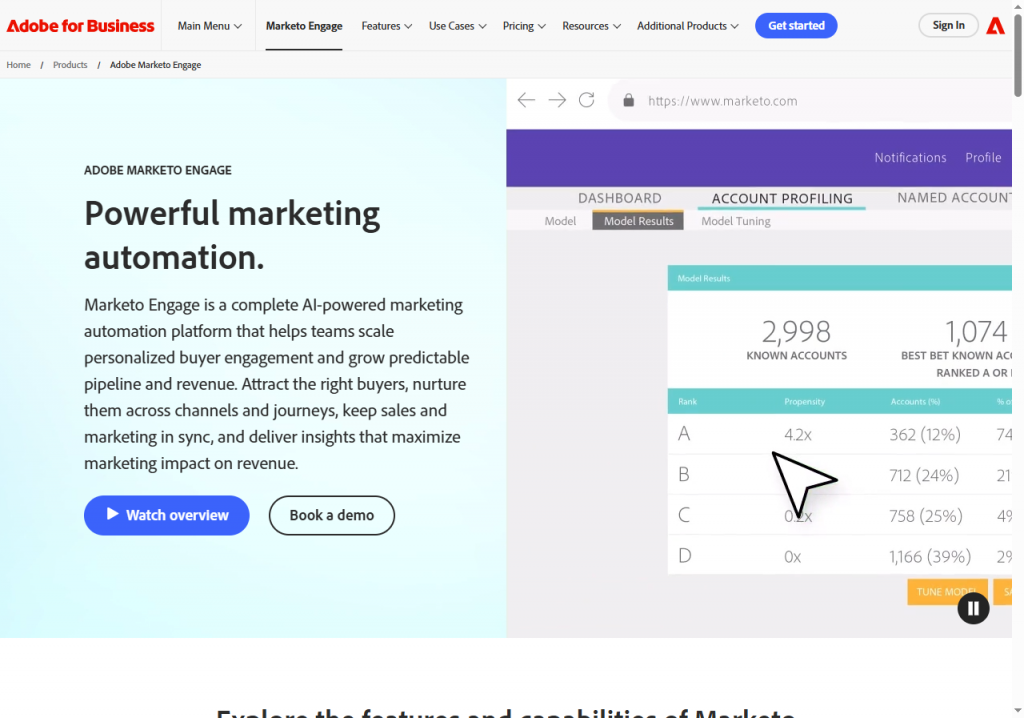
Marketo Engage by Adobe is well-known for its robust automation capabilities suited for medium to large SaaS businesses. It excels at creating sophisticated drip campaigns that send automated, timed sequences of emails to nurture leads based on their actions or engagement level. Marketo’s deep segmentation allows marketers to tailor content dynamically by customer persona, behavior, and lifecycle stage.
Behavioral triggers such as website visits, form submissions, or trial activations prompt personalized outreach. Marketo integrates seamlessly with major CRMs like Salesforce and provides comprehensive analytics for campaign performance tracking.
ActiveCampaign is a popular choice for small and mid sized SaaS companies seeking an easy-to-use platform blending email and SMS marketing. It offers powerful automation workflows where lead scoring prioritizes prospects based on engagement signals like opens, clicks, or site visits.
The visual automation builder enables the creation of custom nurture funnels with branching logic, ensuring prospects receive contextually relevant messages that move them closer to conversion. ActiveCampaign also supports CRM functions and detailed reporting, helping teams optimize outreach efforts continually.
Pardot is Salesforce’s marketing automation solution tailored specifically for B2B SaaS companies. It integrates tightly with Salesforce CRM to align marketing campaigns with sales pipelines.
Pardot offers tools for email personalization, A/B testing, lead nurturing, and scoring to identify sales-ready leads. Multi-channel orchestration enables campaigns across email, social media, and web landing pages. Pardot’s robust reporting and ROI analytics empower marketers to attribute revenue impact and continually refine strategies.
These platforms enable SaaS marketers to automate repetitive tasks, orchestrate multi-touch campaigns, and personalize communication based on behavior and demographics. By using drip campaigns, behavioral triggers, and deep lead scoring, SaaS teams can nurture leads thoughtfully and efficiently, turning interest into loyalty while scaling growth in 2025.
Landing pages are where visitors turn into leads. With so many SaaS campaigns running, creating high-converting pages that engage and convert is critical. Top landing page builders like Unbounce, OptinMonster, and Leadpages offer powerful features that help marketers optimize conversion rates quickly and efficiently.
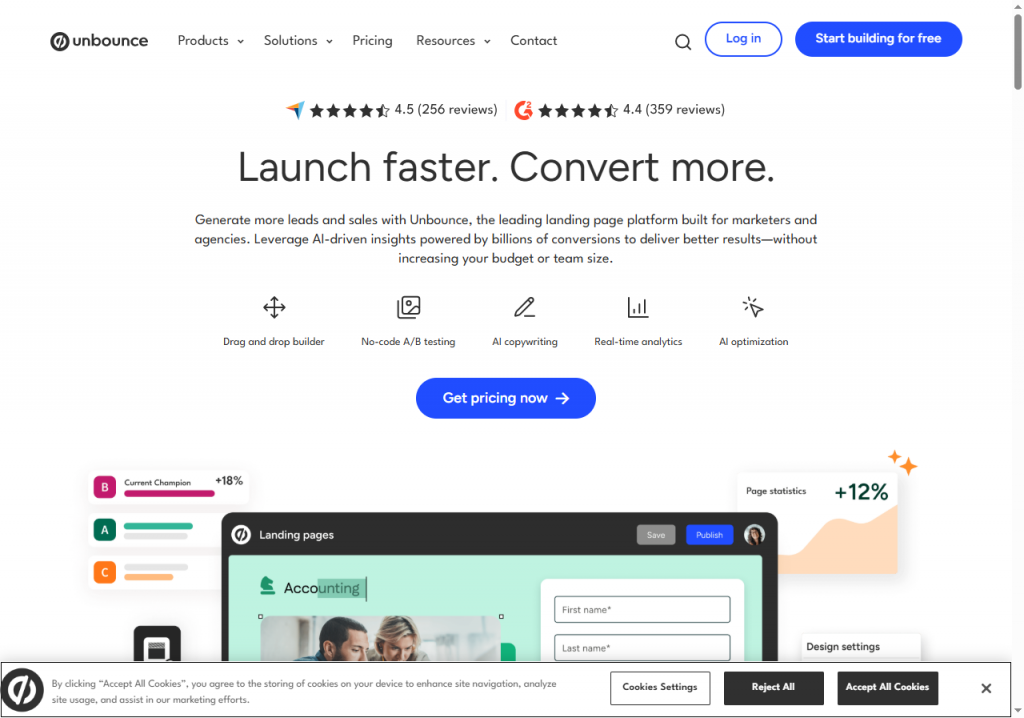
Unbounce is a favorite among SaaS marketers for its intuitive drag-and-drop editor that requires no coding. You can build custom landing pages and test different versions easily with built-in A/B testing. One standout feature is dynamic text replacement, which personalizes page content based on visitor source or behavior, boosting relevance and conversions. Unbounce also integrates deeply with CRMs and marketing automation, so leads flow smoothly into nurture workflows.
OptinMonster focuses on capturing leads through smart pop-up overlays and forms. It tracks visitor behavior to display targeted messages, like offering discounts or free trials when users show exit intent, helping reduce bounce rates. This behavioral targeting ensures outreach feels timely and relevant, increasing lead capture without being intrusive.
Leadpages offers a library of mobile-responsive, conversion-optimized templates tailored for various SaaS use cases. It provides integrated analytics so marketers can track which pages drive leads effectively. The platform combines ease of use with customization to quickly launch campaigns matched to specific products or audience segments.
The best campaigns iterate landing pages frequently, using data from A/B tests and visitor behavior to improve messaging, design, and call-to-action. Quick iteration matched to campaign needs helps SaaS teams minimize cost per lead and maximize ROI, staying competitive in fast-paced markets.
The game is changing for SaaS marketers in 2025 thanks to AI-powered tools that don’t just collect leads but also analyze, prioritize, and nurture them automatically. Platforms like CausalFunnel, Drift, Salesloft, and Outreach help sales teams turn anonymous visitors into qualified prospects and close deals faster with smarter automation and personalization.
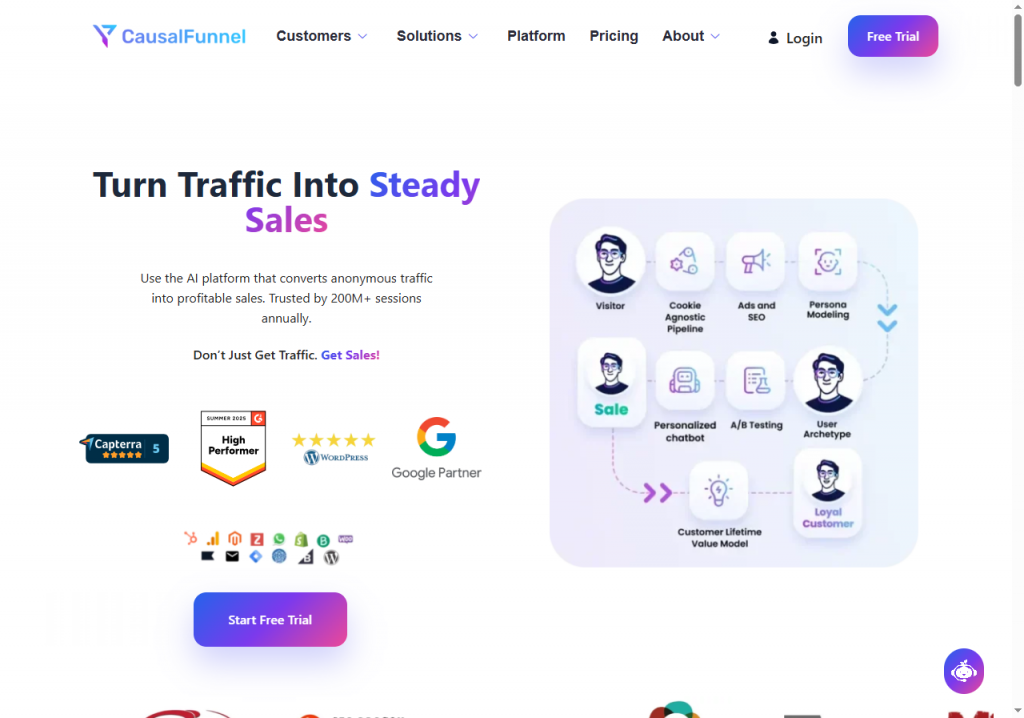
CausalFunnel uses advanced AI and cookie-agnostic tracking to capture visitors who don’t immediately identify themselves. It analyzes user behavior and intent signals in real-time to segment visitors into hot leads and engage them at the right moment.
This approach solves privacy challenges by ensuring accurate attribution across channels while maximizing conversion rates. Additionally, its automated A/B testing experiments with landing pages and campaigns continuously improve funnel performance without manual guesswork.
Drift stands out for its conversational AI chatbot that engages website visitors instantly, qualifying leads through personalized chat interactions. By routing high-intent conversations to sales reps in real-time, Drift reduces friction and accelerates the journey from visitor to customer. Its account-based marketing tools customize messages based on visitor firmographics and behavior, increasing lead capture and enhancing user experience.
Both Salesloft and Outreach automate multichannel sales sequences, integrating email, calls, and social touches into one workflow. They use AI to optimize sending times, predict reply likelihood, and analyze conversations for sentiment and intent. This helps sales teams prioritize the hottest leads, personalize follow-ups, and improve response rates. Features like automated reminders and adaptive sequences boost productivity and ensure no lead falls through the cracks.
AI lead scoring assesses vast behavior and demographic data points to rank prospects accurately, ensuring sales focuses on the highest-value opportunities. Personalized nudges, powered by machine learning, deliver tailor-made messages that resonate with each lead’s current pain points and buying stage. Automated variant testing explores different campaign formats and messaging, speeding up optimization cycles and maximizing results.
In 2025, SaaS lead generation thrives on an integrated tech stack combining CRM systems, sales intelligence platforms, marketing automation, landing page optimization, and AI-driven funnel tools. Each category plays a distinct strategic role: CRMs manage and score leads, sales intelligence tools enrich prospect data, automation platforms nurture effectively, landing page builders convert visitors, and AI tools personalize and optimize interactions at scale.
Choosing the right tools depends heavily on company size, sales model, and budget. Startups benefit from affordable all-in-one solutions like HubSpot or Apollo, while enterprises may gravitate toward Salesforce and Marketo for customization and scalability.
To get the best results, SaaS marketers should continuously experiment with new tools, rigorously analyze performance metrics, and refine campaigns based on evolving buyer behavior and technological advances. Lead generation is an ongoing process of learning and adaptation.
Start by auditing your existing stack, prioritize tools that offer integration and ease of use, and build a roadmap for gradual adoption. By investing in a data-driven, connected lead generation SaaS ecosystem, SaaS companies can ensure sustained pipeline growth and a competitive edge in 2025 and beyond.
Empowering businesses to optimize their conversion funnels with AI-driven insights and automation. Turn traffic into sales with our advanced attribution platform.



